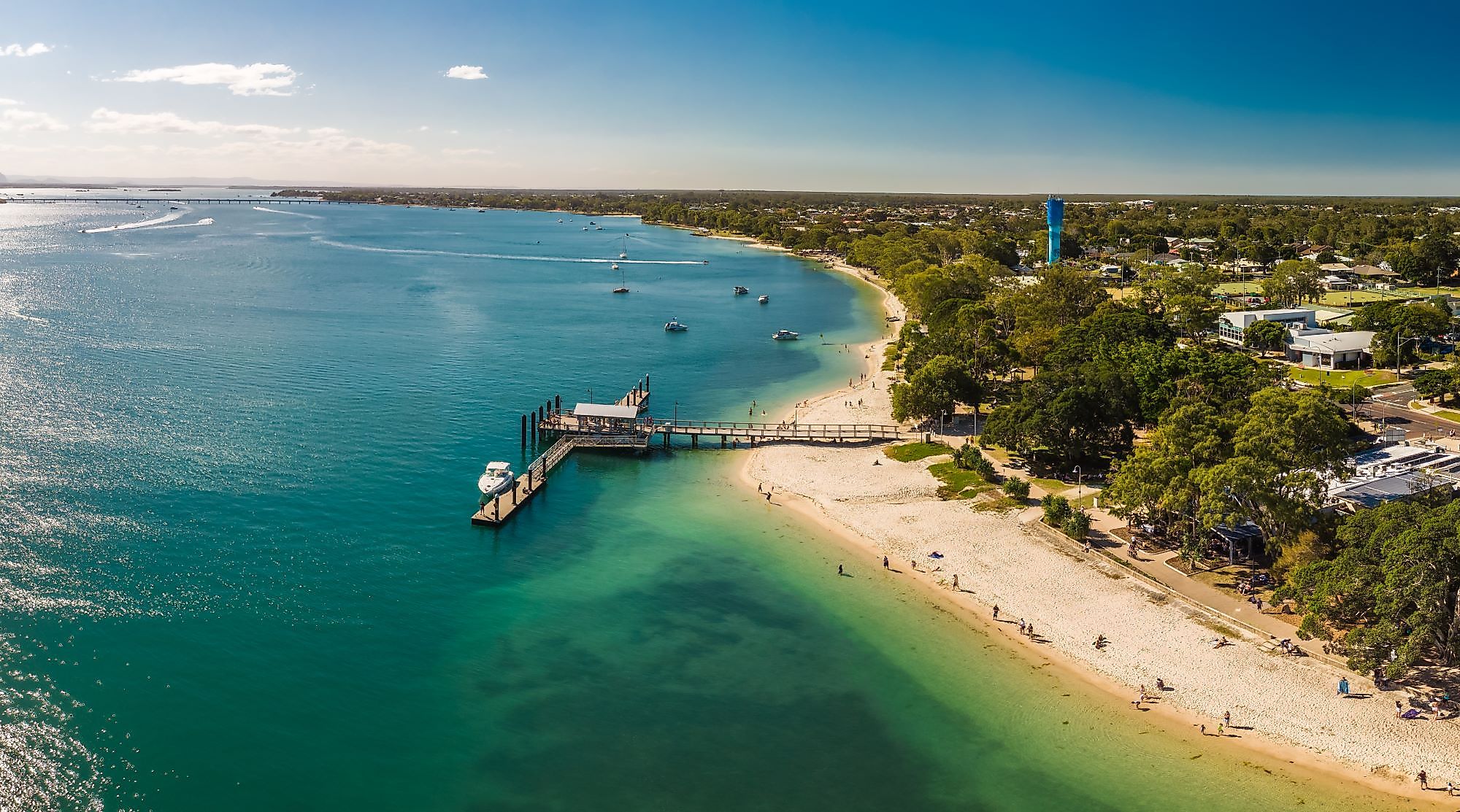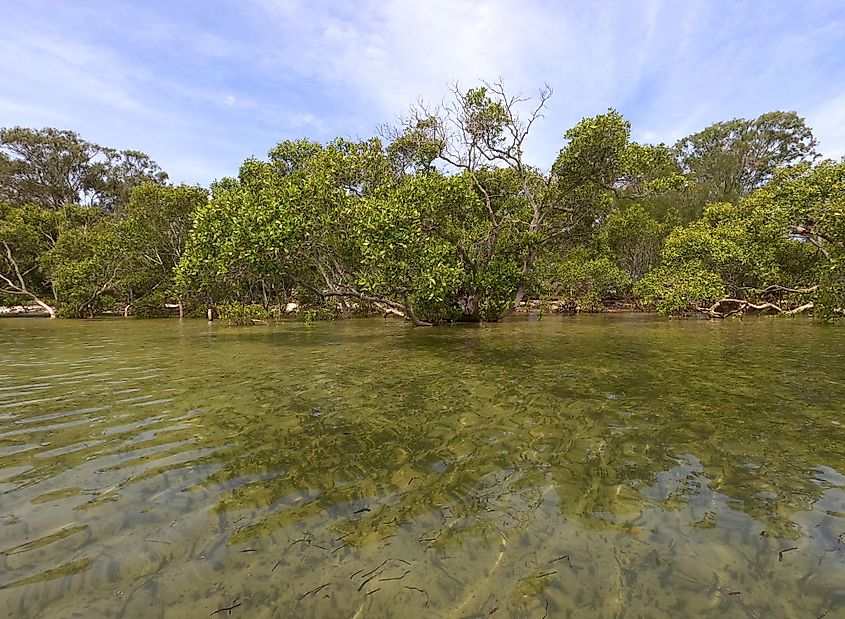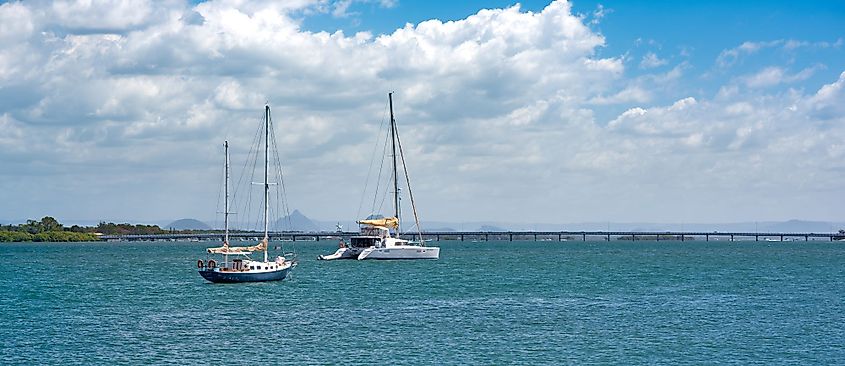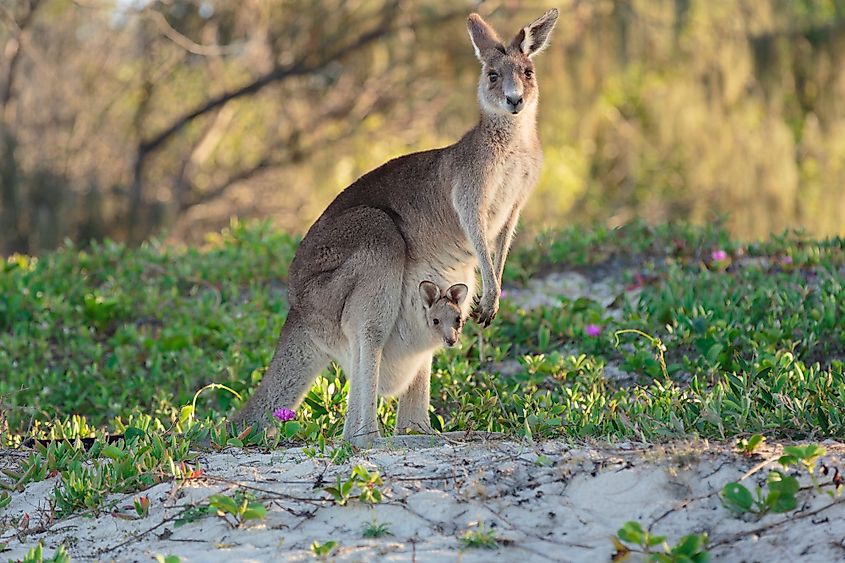
Bribie Island
Bribie Island is located off the coast of Queensland, Australia, in the Coral Sea, and is the smallest of the three main islands (including Moreton Island and North Stradbroke Island) which forms the arm sheltering Moreton Bay. The island measures 34 kilometers in length and 8 kilometers in width.The island is a beautiful example of Australian wildlife and landscape, that is situated only a short drive from the larger city. It makes for an excellent getaway for vacationers or beach goers, but also has a plethora of wildlife to view and enjoy from a respectful distance.
Landscape

Bribie Island runs closely along the coastline of the province of Queensland, just north of Brisbane and the Gold Coast and south of the Sunshine Coast. The island tapers to a long point at its northern end, near Caloundra, and is separated from mainland Australia by Pumicestone Passage. The western side of the island contains both sand plains, and muddy tidal deltas which are of the salt marsh variety. Mangrove trees are the most common vegetation here. Alternatively, the eastern side contains sandy tidal deposits and therefore has the majority of the old sand beaches. Plants that live along the foredunes of the coast include coastal she-oaks, eucalyptus trees, acacias, banksias and beach spinifex. These plants are important as they help to hold the sandy areas and dunes from washing or eroding away. Just inland from the coastal facing beaches are a series of small lagoons, which can overflow into the beaches in rainy seasons.
Attractions

Bribie is a popular destination for beach goers, and those wanting to enjoy the coastal views, and warm water. But there are also several other attractions and things to do in the area. Visitors may choose to check out the Bribie Island Seaside Museum, White Ridge Farm, or the Bribie Island Butterfly House. For the more adventurous, activities include boat charters, cruises, jet skiing rentals, 4x4 rentals, whale watching, cycling, or golfing. The island is very family friendly, and aside from various resorts or hotels, there are campgrounds and picnic areas, great for a weekend getaway or day trip. Outdoor and nature lovers will also want to check out the 55.8 sq.km Bribie Island National Park. The park offers fishing, camping and hiking activities, but is primarily a protected area of forest and natural animal habitat. All access to the park is limited to a single entrance way, ensuring limited vehicle and foot traffic in the area.
Flora and Fauna

A variety of animals live on and around Bribie Island. The tidal wetlands are ideal homes for young fish, crabs and prawns, all of which also live in the protected Pumicestone Passage. Seagrass also grows in abundance here, which provides food for the population of dugong that frequent the passage. Turtles and dolphins are also common in the area, and offshore from the beachy regions as well. Inland animals include kangaroos, wallabies, dingoes, fruit bats and various reptiles and amphibians such as a variety of snakes as well as green tree frogs. Some 350 or so species of birds call the island home, and are found from the beaches to the forests. Everything from emu, to various honeyeaters, lorikeets, sea eagles, kites, and osprey reside here. The island also sees roughly 10,000 - 15,000 migratory birds during summer months, especially in the wetlands.











